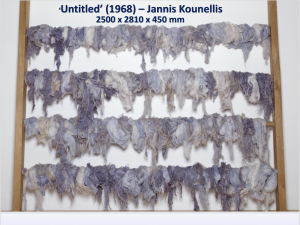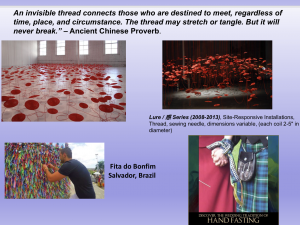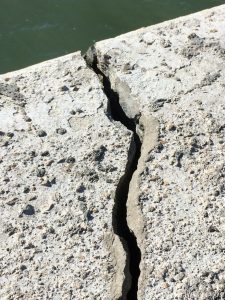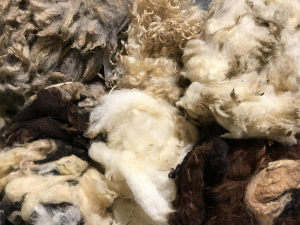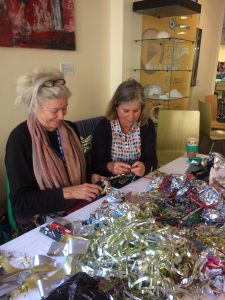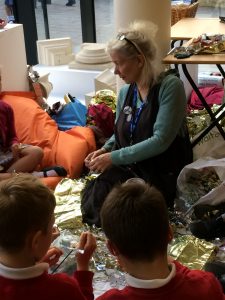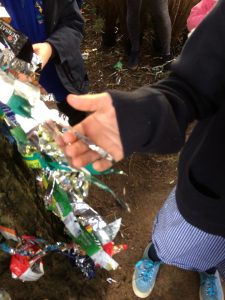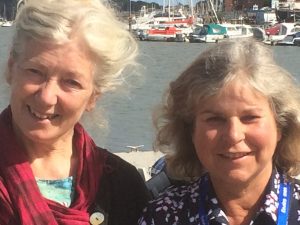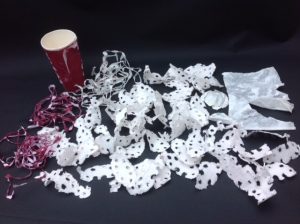
A woman photographs French artist Christian Boltanski’s ‘No Man’s Land’, composed of 30 tons of discarded clothing, on display at the Park Avenue Armory in New York. The site-specific art installation fills the hall with 45 rectangular plots of clothes and a 25 foot high pile of garments. (Photo by STAN HONDA/ AFP/ Getty Images)
Following on from our workshop at the RepairActs seminar we submitted this week the following written evidence to the UK Parliamentary Inquiry into Sustainability of the Fashion Industry
****************************
As the scourge of contemporary ‘disposability’ has infiltrated seemingly every aspect of modern life – (Collins dictionary has described ‘single-use’ as its word of 2018), it becomes ever more necessary to arrest, contradict and question the ethics of the ‘fast fashion’ phenomenon. This can be seen in the context of a critique of modern day capitalism: a global capitalism, led by Western economies, with few checks and balances even when inland lakes are caused to disappear due to the demands of growing cotton and rivers in developing economies are polluted by chemicals from factories producing the cloth used to feed our fast fashion habit (BBC 2018).
Somewhat surprisingly, Britain has the highest level of consumption of clothing per household in the European Union, a practice which also implies ‘fast’ disposal, a concept which we all know does not at present exist, with more than 300,000 tons of ‘waste’ textiles sent to landfill every year in Britain alone, or in monetary term 140 million pounds worth.
Cultural (news and glamour press, advertising industries) and commercial (the Brits especially seem to love a bargain) pressures all play a part in adding to this situation where ‘cheapness’ is seen as the main driver of acquiring new goods, this being seen as a virtue rather than an indicator that something (the environment, eg water supplies) or some-one (underpaid and exploited workers in unhealthy or often dangerous factories) has suffered in the production of these goods, whose main selling point is their availability and low price point.
As Oxfam (2016) has recently described, the average British consumer only wears 44% of their wardrobe, having at any one time 57 items of items unworn in their possession. So why do people prefer a bulging wardrobe of cheap unworn clothes compared to a collection of fewer, longer lasting items? Novelty would seem to be a contributing factor as to how and why we acquire clothing that is hardly ever worn, if at all. Unfortunately our acquisitive culture has resulted in the average consumer feeling ’rich’ in their acquisition of cheap goods. This illusory state can easily be challenged and altered if consumers are made more aware of the impact and repercussions that their choice of clothing has on the wider world, on people and planet.
Suggestions for change
Every garment is the sum of its parts – from the fibre from which it was made – natural (grown), or synthetic (manufactured) to the dyes, the threads, the buttons, the zips, the processes and the distribution journeys it makes. Until these goods are seen as an inherent ‘whole’, i.e. their provenance, their manufacturing processes and impacts are revealed and acknowledged, how can this concept be challenged?
In the same way their ‘disposal’ also needs to be addressed. Can the garment be recycled? Probably not. Is the garment of sufficient quality to be passed on and sold second-hand? Possibly, but even this practice feeds current ‘waste’ streams of our second-hand goods and can flood developing countries with unwanted textiles that can harm their own textile production businesses. There is no easy disposal.
A complete life cycle analysis, already undertaken on some goods, could be produced for garments, resulting in a new labeling system and links (easily accessible through digital means) to means of production undertaken by the company. This life cycle analysis would involve assessing the impact of the material from which fabrics are made, e.g. how/where grown or manufactured, pesticide/fertilizer use, energy use, water use etc., the durability/quality of the cloth produced – some fabrics, if taken care of, can last a lifetime and longer, also where the garments were made and by whom, and ultimately a route for their disposal – this would be influenced by whether they are made from natural or man-made fibres, suitable for reuse, or recycling. This greater transparency into industrial processes would provide an insight into how our world, and the flow of materials within it, really works and the impact we all have on a daily basis by buying and wearing the garments we choose. It is essential to question and demand a better set of ethics, both for workers, the environment, and ultimately for us, of the manufacturing industries that currently control the fashion world. We need to realise a sense of connectedness to these industrial processes and implications of the making of these garments that become intimate parts of ourselves, that we wear next to our skin, possibly even absorbing some of these chemicals in the process.
The fashion industry will resist and suggest that their supply chains are too complex for this to happen but raising an awareness of the possibility of this being the future will make the fashion industry more transparent for the (hopefully) more demanding consumer of the 21st century where current ecological crises make this approach inevitable. The recently disturbing information regarding microfibers, tiny pieces of plastic polymers which are washed into our water courses from synthetic fibres is another major cause for concern and should be an added impetus that the industry has to put its house in order.
With excellent work being done by charities such as Labour Behind the Label and TRAID, the excesses inherent in fast fashion are revealed and addressed. Caring for and hence connecting with, valuing, mending, repairing, sharing and swapping, as well as reducing and re-using, are words that need to be reinserted into the lexicon of the fashion industry so that its reputation can be salvaged, and before more water sources dry up and more rivers are poisoned.
Dr Alison Harper and Dr Sarah Chave
Alison Harper (artist) and Sarah Chave (educational researcher) are currently collaborating on Deep materialism and care-taking: a study of material relationships for the 21st Century – a project supported by the University of Exeter’s Environmental and Sustainability Institute’s Creative Exchange Programme. Their project promotes a more thoughtful and caring way to be in the world, where our relationships with material really does matter.
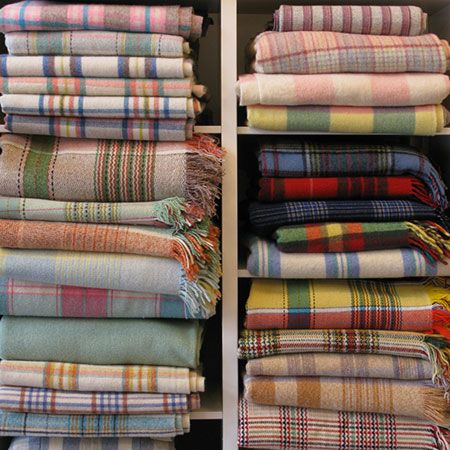
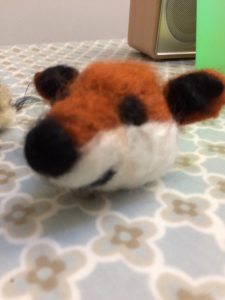






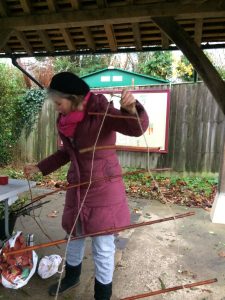



 “...we must come down to earth from the clouds where we live in vagueness and experience the most real thing there is: material (1937)”.
“...we must come down to earth from the clouds where we live in vagueness and experience the most real thing there is: material (1937)”.




